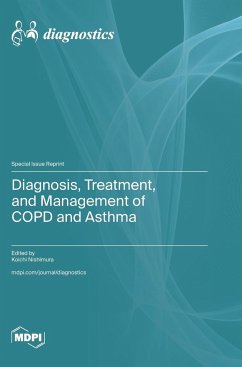
COPD - Pathology, Diagnosis, Treatment, and Future Directions
Pathology, Diagnosis, Treatment, and Future Directions
Herausgeber: Jones, Steven
Versandkostenfrei!
Versandfertig in 1-2 Wochen
135,00 €
inkl. MwSt.

PAYBACK Punkte
0 °P sammeln!
Chronic obstructive pulmonary disease is a (currently) incurable and irreversible lung condition with worldwide mortality rates similar to stroke, diabetes, and Alzheimer¿s disease. Treatments are limited to the removal of the underlying causes (e.g., exposure to smoke), easing some of the symptoms, and slowing the rate at which the disease worsens. As a consequence of smoking, it is less well known than lung cancer even though it has an equal or higher mortality rate. It is a combination of diseases that affects bronchioles and alveoli to different extents from patient to patient. An accurat...
Chronic obstructive pulmonary disease is a (currently) incurable and irreversible lung condition with worldwide mortality rates similar to stroke, diabetes, and Alzheimer¿s disease. Treatments are limited to the removal of the underlying causes (e.g., exposure to smoke), easing some of the symptoms, and slowing the rate at which the disease worsens. As a consequence of smoking, it is less well known than lung cancer even though it has an equal or higher mortality rate. It is a combination of diseases that affects bronchioles and alveoli to different extents from patient to patient. An accurate diagnosis of each patient¿s physiology is potentially useful in tailoring treatment to the underlying physiology. This book provides an overview of the underlying pathology of the disease. It then discusses some of the clinical tools available to obtain pathology-specific diagnosis for a given patient. A section then discusses the consequences of the disease. While some of these consequences are readily expected from a cursory understanding of the disease (anemia and shortness of breath), others are less obvious (muscle atrophy, impaired balance, and cardiac problems). In the final sections, disease treatment is addressed. The book is intended to convey two important points. The first is that hope exists for more effective treatments in the future, while the second is that these treatments will require strong collaborations among researchers in a variety of disciplines.












